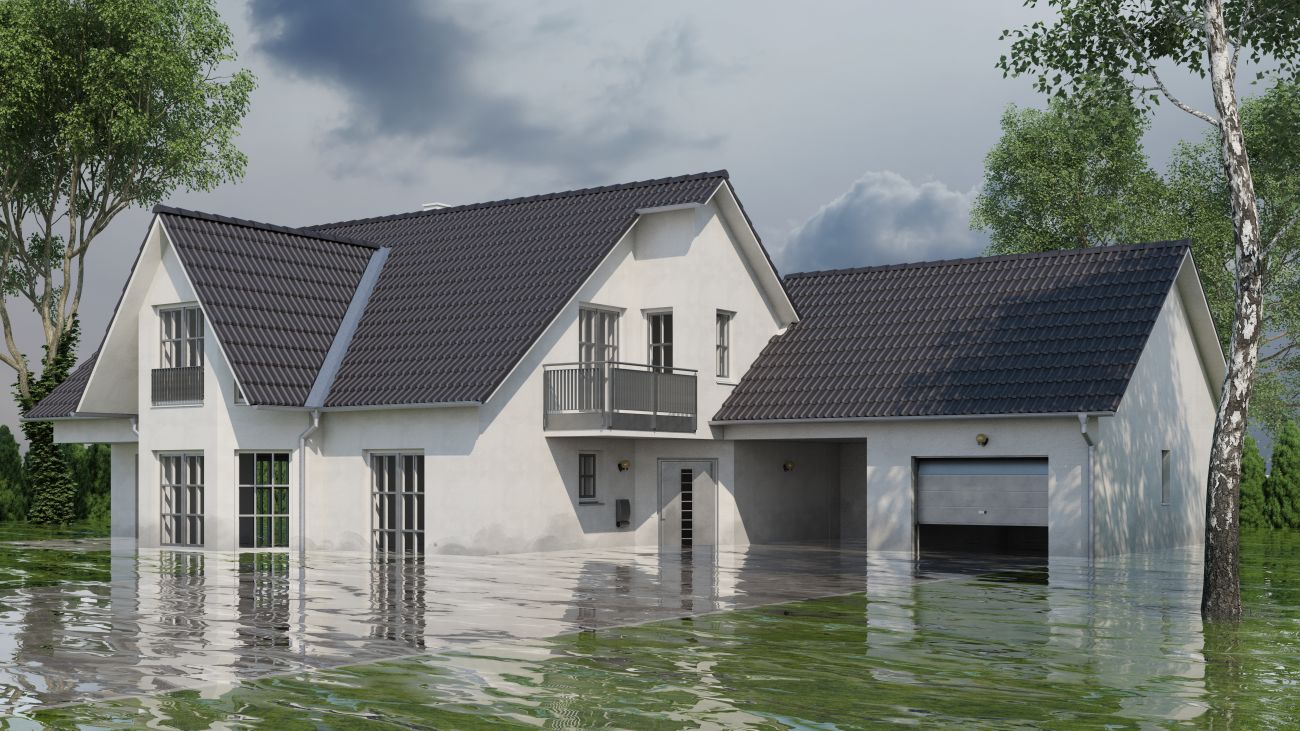You devote your blood, sweat, and tears to buy luxuries for your home. However, regardless of how hard you worked to afford everything, water damage can ruin it all and leave you feeling helpless.
Flooding can occur instantly, especially in the event of a major rainstorm or hurricane. This is because the slope of the land, or grading, can either drain or bring water in. According to a report published by the New York Times in 2020, 14.6 million properties are at risk of flooding.1 And unfortunately, water damage repairs might cost up to $3,000 on average.2
 Robert Kneschke / Shutterstock
Robert Kneschke / ShutterstockStandard homeowners’ insurance policies never cover water damage. While flood insurance is the most effective strategy to protect yourself from expenses after severe flood damage, there are various aid programs that can help if you find yourself without it.
FEMA Grants
The federal government offers grants to repair flood damage to your property and cover other costs through the Federal Emergency Management Agency (FEMA).
One such grant is the Individuals and Households Program (IHP). This grant is provided to those living in federally declared disaster zones. IHP grants are quick at helping you get back into your home after a tragedy. Officially, grants can be up to $30,000, but payments are typically significantly lower.3 For example, the average grant for residences flooded by Hurricane Sandy in 2012 was $8,016.4
If your property is uninhabitable, you can request a FEMA grant to rent a place while professionals repair the damages in your home. FEMA may also contribute to the construction of permanent or semi-permanent housing in exceptional circumstances.5
SBA Disaster Loans
Businesses, charitable organizations, homeowners, and renters can apply for low-interest, long-term loans from the Small Business Administration (SBA) to repair equipment and inventory that has been damaged. The SBA offers a wide array of loan programs, including the Economic Injury Disaster Loan, Military Reservists Economic Injury Disaster Loan, and the Express Bridge Loan Pilot Program, which can lend you nearly $25,000 in an emergency.6
Every category of SBA disaster loan has its own set of criteria. In most cases, a declared emergency must have caused damage to your business for you to be eligible for a disaster loan. Additionally, you must have a good credit history and give the SBA permission to examine your personal or business tax records.
An SBA disaster loan of $25,000 or less will not require collateral. If insufficiency of collateral is the only negative aspect in a disaster loan application and SBA is certain that the borrower can repay the loan, it will not deny the loan. Applicants who fail to offer available collateral may have their loans denied or canceled by the SBA.7
National Flood Insurance Program
The Federal Emergency Management Agency is in charge of the National Flood Insurance Program (NFIP). Congress established the NFIP in 1968 to safeguard lives and property and alleviate the financial burden of floods. It is designed to protect residents if a federal disaster has not been declared.
The NFIP has limits on flood insurance coverage. Damages to single-family homes or multi-family residential constructions are restricted to $250,000. Other residential and non-residential structures are limited to $500,000. Residences are limited to $100,000 in damages under content-only insurance, whereas commercial and other structures’ contents are limited to $500,000.8
Home and Property Disaster Loans
Individuals residing in a declared disaster zone, including homeowners, renters, and personal property owners, can apply for this loan from the SBA to help them recuperate from the disaster.
Homeowners can apply for up to $200,000 in repairs or replacements for their primary home. Unfortunately, you are unable to use the funds to improve your home. However, if you make modifications that would help prevent future property damage, you may be eligible for a 20 percent loan increase. Renters also qualify for a loan of up to $40,000 to restore personal property lost in a disaster.
Survivors must return the disaster loans. Only candidates with an actual ability to repay the loan and other obligations from earnings are eligible for SBA loans. These conditions are determined by the borrower’s ability to pay back the loan. Moreover, these disaster loans are more affordable because they are long-term (up to 30 years) with low fixed interest rates.9
Charities and Other Nonprofits
When calamity strikes, charities and nonprofit organizations are on the scene and ready to help with food and supplies. Charities prepare beforehand and store emergency food supplies to deliver swiftly in the case of a crisis. Moreover, food banks in disaster-affected areas have access to equipment and supplies.
During a disaster, charities and nonprofits can respond quickly since their nationwide network is in place to transport essential food, water, and supplies to disaster-stricken areas. Even better, they are integrated with communities to help with long-term recovery after other disaster relief organizations have left.
Plus, disaster relief isn’t exclusive to humans. Organizations like PetSmart Charities provide disaster relief for displaced animals, pet owners, and the local establishments helping them.10
Notable charities and nonprofits include American Red Cross, Habitat for Humanity, and The Salvation Army.11
Protect Your Home – Start Today
You can wait for a crisis to happen before approaching the government for assistance. But, you never know when a natural disaster will hit and cause significant water damage to your home. Although you have several options available to you, you must meet several criteria to be eligible.
Since flooding has become more common due to global warming, it is imperative that you purchase flood insurance to protect yourself and your loved ones during a difficult time. You’ll put your family and house in the strongest position to survive flooding and be as safe as possible if you’re equipped and well informed.